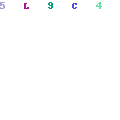Children's Eye Health
 Healthy eyes and vision are a critical part of kids' development. Their eyes should be examined regularly, as many vision problems and eye diseases can be detected and treated early.
Healthy eyes and vision are a critical part of kids' development. Their eyes should be examined regularly, as many vision problems and eye diseases can be detected and treated early.
Eye Doctors

Be sure to make vision care and eye checks a part of your child's routine medical care.
Different kinds of doctors offer eye care, and the names can be confusing:
- Ophthalmologists are doctors who provide comprehensive eye care with medicine and surgery.
- Pediatric ophthalmologists have special training to treat kids' eye problems.
- Optometrists provide routine primary eye care and can prescribe eyeglasses and examine vision.
- Opticians fit and adjust eyeglasses.
Eye Exams
Routine medical exams for kids' vision include:
- Newborns should be checked for general eye health by a pediatrician or family physician in the hospital nursery.
- High-risk newborns (including premature infants), those with a family history of eye problems, and those with obvious eye irregularities should be examined by an eye doctor.
- In the first year of life, all infants should be routinely screened for eye health during checkups with their doctors.
- Around age 3½, kids should undergo eye health screenings and visual acuity tests (or tests that measure sharpness of vision) with their doctors.
- Around age 5, kids should have their vision and eye alignment evaluated by their doctors. Those who fail either test should be examined by an eye doctor.
- After age 5, further routine screenings should be done at school or the doctor's office, or after the appearance of symptoms such as squinting or frequent headaches. (Many times, a teacher will realize the child isn't seeing well in class.)
- Kids who wear prescription glasses or contacts should have annual checkups to screen for vision changes.
Spotting Eye Problems
Signs that a child may have vision problems include:
- constant eye rubbing
- extreme light sensitivity
- poor focusing
- poor visual tracking (following an object)
- abnormal alignment or movement of the eyes (after 6 months of age)
- chronic redness of the eyes
- chronic tearing of the eyes
- a white pupil instead of black
In school-age children, watch for other signs such as:
- inability to see objects at a distance
- inability to read the blackboard
- squinting
- difficulty reading
- sitting too close to the TV
Watch your child for evidence of poor vision or crossed eyes. If you notice any eye problems, have your child examined immediately so that the problem doesn't become permanent.
If caught early, eye conditions often can be reversed.
Common Eye Problems
Several eye conditions can affect kids. Most are detected by a vision screening using an acuity chart during the preschool years.
- Amblyopia (lazy eye) is poor vision in an eye that
appears to be normal. Two common causes are crossed eyes and a difference in the refractive error between the two eyes. If untreated, amblyopia can cause irreversible visual loss in the affected eye. (By then, the brain's "programming" will ignore signals from that eye.) Amblyopia is best treated during the preschool years. - Strabismus is a misalignment of the eyes; they may turn in, out, up, or down. If the same eye is chronically misaligned, amblyopia may develop in that eye. With early detection, vision can be
restored by patching the properly aligned eye, which forces the misaligned one to work. Surgery or specially designed glasses also may help the eyes to align. - Refractive errors mean that the shape of the eye doesn't refract, or bend, light properly, so images appear blurred.
Refractive errors also can cause eyestrain and/or amblyopia.
Nearsightedness is the most common refractive error; others include
farsightedness and astigmatism: - Nearsightedness is poor distance vision (also called myopia), which is usually treated with glasses or contacts.
- Farsightedness is poor near vision (also called hyperopia), which is usually treated with glasses or contacts.
- Astigmatism is imperfect curvature of the front surface of the eye, which is usually treated with glasses if it causes blurred vision or discomfort.
Other eye conditions require immediate attention, such as retinopathy of prematurity (a disease that affects the eyes of premature babies) and those associated with a family history, including:
- Retinoblastoma is a malignant tumor that usually
appears in the first 3 years of life. The affected eye may have visual
loss and whiteness in the pupil. - Infantile cataracts can occur in newborns. A cataract is a gradual clouding of the eye's lens.
- Congenital glaucoma in infants is a rare condition that may be inherited. It is the result of incorrect or incomplete development of the eye drainage canals before birth and can be treated
with medication and surgery. - Genetic or metabolic diseases of the eye, such as inherited disorders that make a child more likely to develop retinoblastoma or cataracts, may require kids to have eye exams at an early age and regular screenings.
Be sure to talk to your doctor if your child is at risk for any of these conditions.
Kids of all ages — even babies — can wear glasses and contacts.
Keep these tips in mind for kids who wear glasses:
- Allow kids to pick their own frames.
- Plastic frames are best for children younger than 2.
- If older kids wear metal frames, make sure they have spring hinges, which are more durable.
- An elastic strap attached to the glasses will help keep them in place for active toddlers.
- Kids with severe eye problems may need special lenses called high-index lenses, which are thinner and lighter than plastic lenses.
- Polycarbonate lenses are recommended, especially for kids who play
sports. Polycarbonate is a tough, transparent thermoplastic used to make thin, light lenses. However, although they're very impact-resistant, these lenses scratch more easily than plastic lenses.
Infants born with congenital cataracts may need to have their cataracts surgically removed during the first few weeks of life. Some children born with cataracts wear contact lenses at 6 months of age.
Around age 10, kids may express a desire to get contact lenses for cosmetic purposes or convenience if they play sports. Allowing a child to wear contacts depends on his or her ability to insert and remove
lenses properly, faithfully take them out as required, and clean them
as recommended by the doctor.
Your eye doctor can help you decide what type of vision correction is best for your child.
Reviewed by: Sharon Lehman, MD
Date reviewed: July 2007
 In a survey undertaken by the College of Optometrists on two thousand people, it was found that close to a third of British-origin parents didn’t invest in sun-protective glasses for their children. Even in those that did buy them, close to half of them laid greater emphasis on costing rather than adequate protection and merely a quarter of them bought sun-protective eyewear from reputed brands.
In a survey undertaken by the College of Optometrists on two thousand people, it was found that close to a third of British-origin parents didn’t invest in sun-protective glasses for their children. Even in those that did buy them, close to half of them laid greater emphasis on costing rather than adequate protection and merely a quarter of them bought sun-protective eyewear from reputed brands.










 Healthy eyes and vision are a critical part of kids' development. Their eyes should be examined regularly, as many vision problems and eye diseases can be detected and treated early.
Healthy eyes and vision are a critical part of kids' development. Their eyes should be examined regularly, as many vision problems and eye diseases can be detected and treated early.









